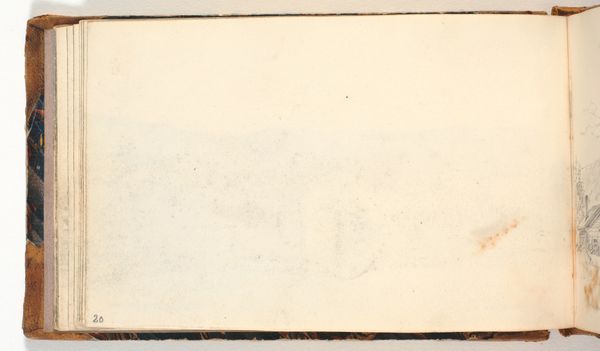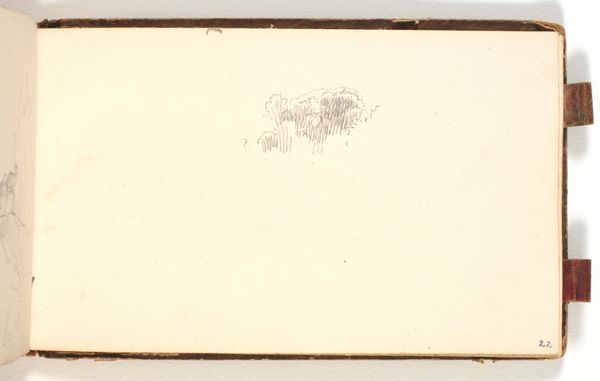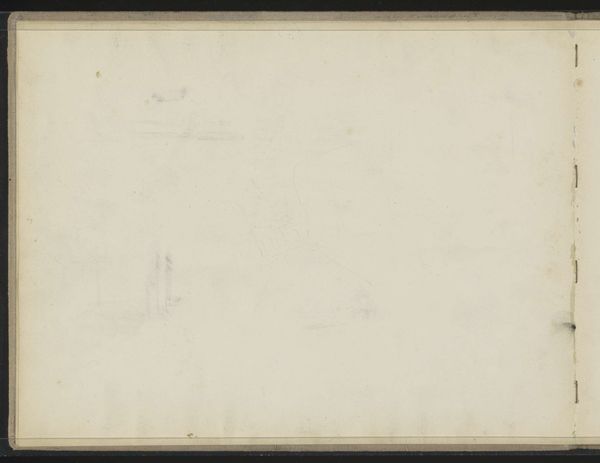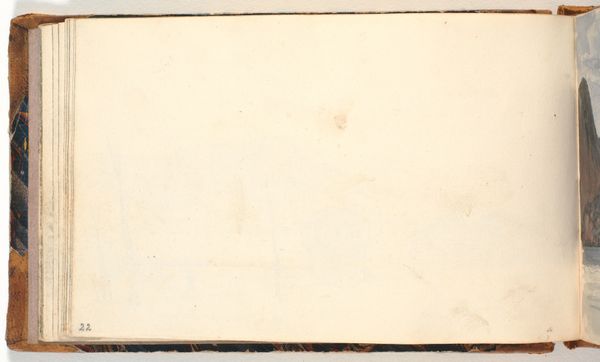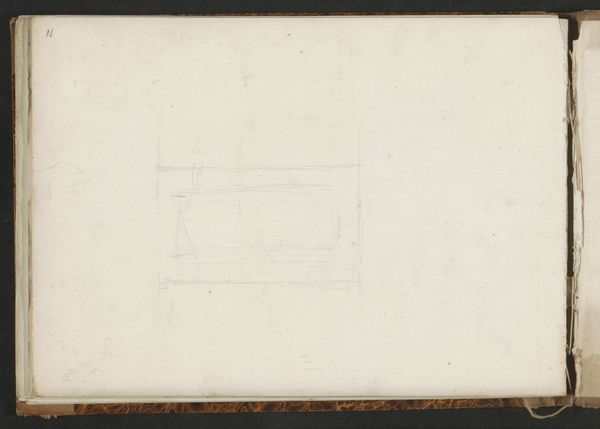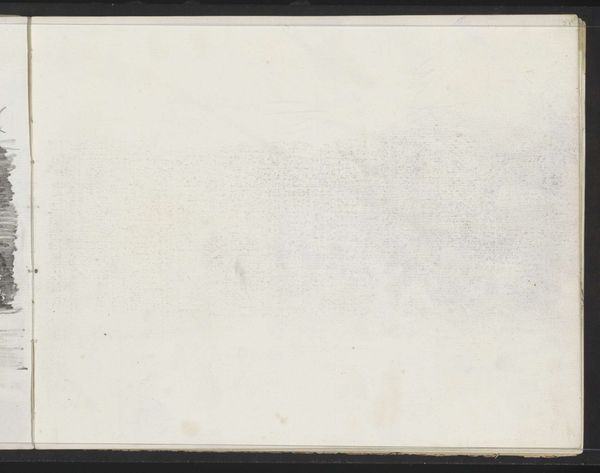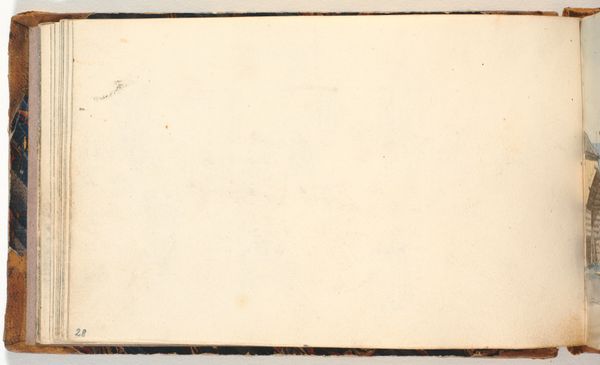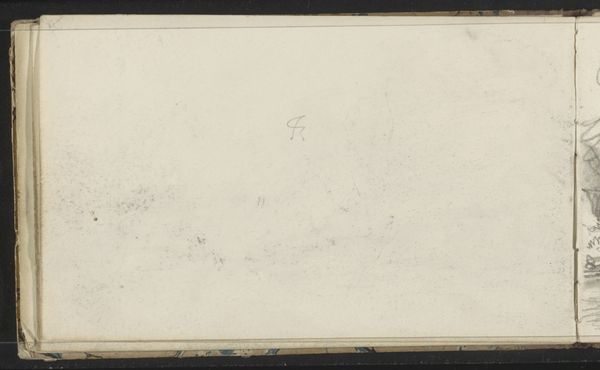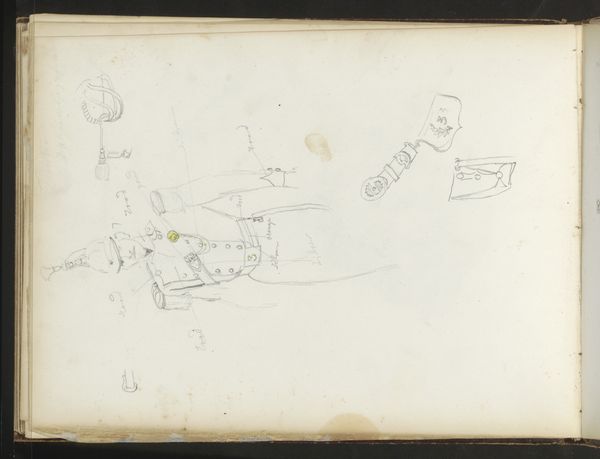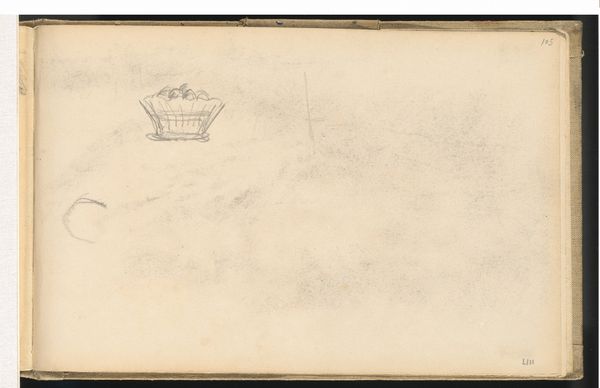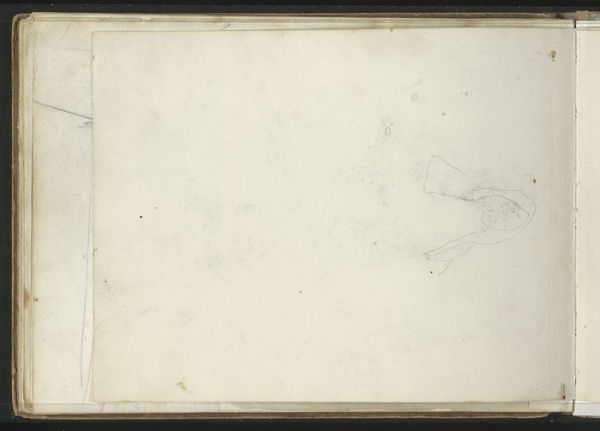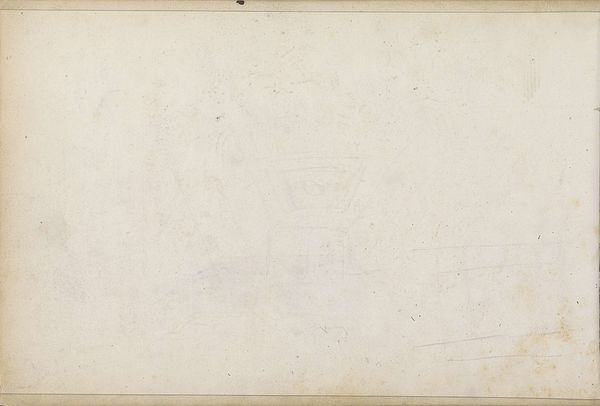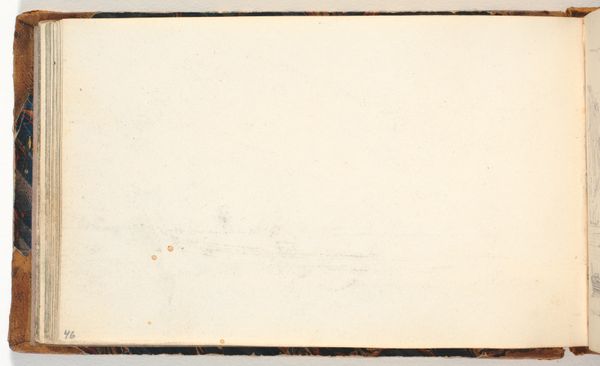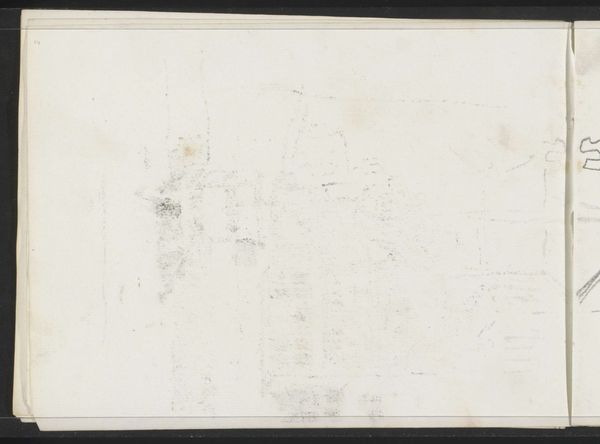
Geometrical Figure (in Sketch Book With Drawings on Twenty-six Leaves) 1850 - 1860
0:00
0:00
drawing, print, pencil
#
drawing
# print
#
coloured pencil
#
geometric
#
pencil
#
academic-art
Dimensions: Sheet (page): 7 7/8 x 10 7/8 in. (20 x 27.6 cm)
Copyright: Public Domain
Curator: Right, let's dive in. Here we have a page from Frederic Leighton's "Sketch Book With Drawings on Twenty-six Leaves," dating from around 1850 to 1860. Predominantly pencil, a geometric figure on aged paper. What strikes you first? Editor: Solitude. A whisper on a vast, silent plane. It's like finding a forgotten thought, sketched then abandoned to the ages. Curator: The sketch itself, while simple, points to the academic training Leighton underwent. Pencil sketches were vital in learning techniques for transferring knowledge from geometry through architecture and, eventually, to rendering the human figure. It's all about the underdrawing— the infrastructure supporting representational art. Editor: That's interesting. And what an understatement. Academic, indeed! My eye wants to leap to narratives unrealized! The curve hints, perhaps, at vessels or foundations. I wonder why Leighton selected it and whether that was as dry an exercise as it appears to be on the page. It does seem...incomplete. Curator: Incompleteness, though, is part of its charm. Think about sketchbooks themselves as objects of production: often a record of daily labor, filled with experiments, studies, and sometimes complete drawings. For an artist trained in the mid-19th century, the sketchbook would be their laboratory and library, both resource and receptacle. Editor: A private universe—so many thoughts and feelings that could pour forth onto a canvas, but never did. The very grain of the paper beckons the mind's eye into it. I imagine running my finger over the paper’s edge, sensing what Leighton did. Curator: Indeed, Leighton would likely see this geometric figure as functional and purely that, a foundation on which he’d create some beautiful aesthetic structure. What he considered more crucial than it, though equally as functional. It is how one becomes masterful. Editor: What it lacks in grand gestures it speaks in undertones. I still sense secrets that can only come out in seeing them or in thinking about how they would serve as a way to create. Curator: An excellent insight—a testament to the unseen labor shaping artistic creation. Editor: Precisely. These pages are just hushed with what didn’t, but just could happen. What can emerge is for someone to realize!
Comments
No comments
Be the first to comment and join the conversation on the ultimate creative platform.
